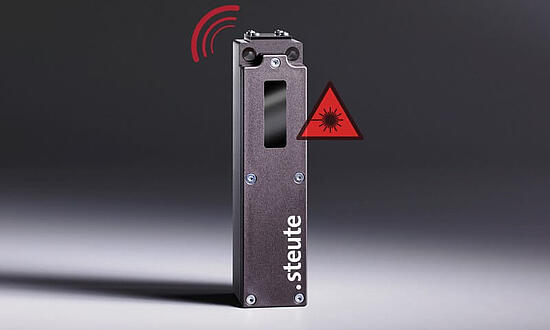In numerous industrial fields, wireless laser sensors have considerable advantages compared to electromechanical switching devices and – depending on the application in question – also compared to other types of sensor. These non-contact sensors have no moving parts and are thus free of wear and tear, are non-sensitive to optical interference, and with their compact design are quick and easy to integrate in existing constructions.
An additional benefit of laser sensors is the reliability of non-contact detection: the switching point of the sensor is only minimally dependent on the colour and material of the object.
For these reasons, steute is expanding its range of optical wireless sensors. The latest addition is the RF 96 SDS wireless laser sensor, where SDS stands for 'short-distance sensor'. The sensor range is 50 up to 250 mm and is detected by optical time of flight measurement, facilitating the – non-contact and low-energy – detection of movements almost in real time. Data are transferred via the sWave® wireless protocol, developed by steute especially for industrial applications.
The RF 96 SDS has a variety of practical functions and features – for example, an LED which lights up if the battery charge falls below a pre-defined level, informing the user that the battery needs changing. It is also optionally available with a 'listen before talk' (LBT) function, which is ideal in cases where interference with other wireless systems cannot be excluded. And customised variants can also be realised, for example to achieve an even longer switching distance (up to 500 mm).
One of the first applications for the new RF 96 SDS is the monitoring of an assembly line for car axle modules. Laser sensors detect the axles at assembly points and transmit their data remotely to the central control system in order to inform forklift drivers where there is a free space.
Compact wireless laser sensor
Files:
compact_wireless_laser_sensor_RF_96_SDS.jpg
jpg | 391 KB




























